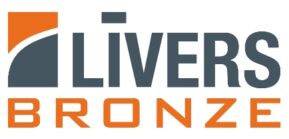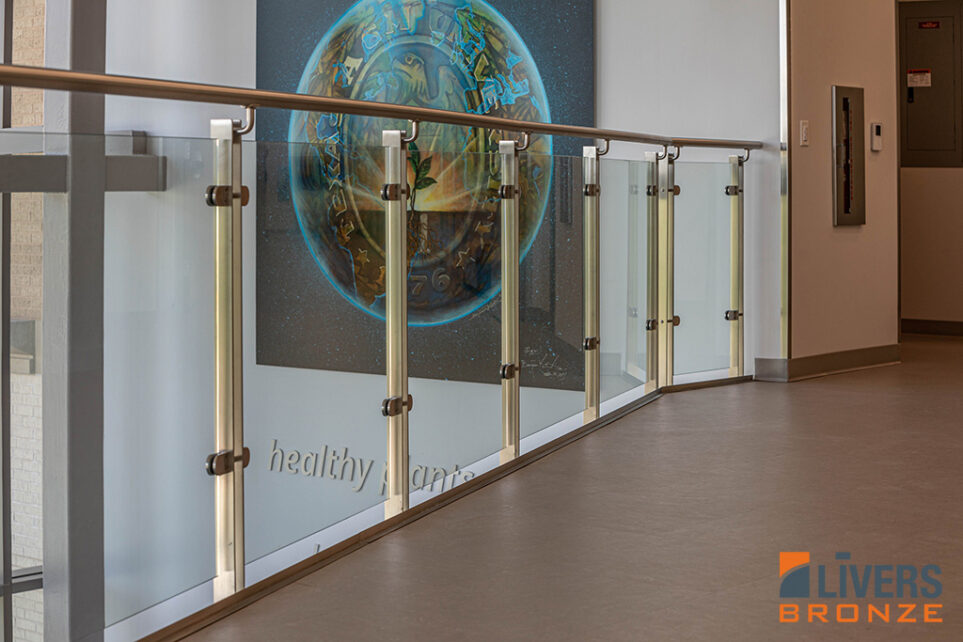With their clean and minimalist appearance, glass infill panels and acrylic infill panels are popular elements used in railing systems for several types of buildings such as commercial office buildings, educational facilities, airports and more. Glass and acrylic panels in commercial railing systems open up the space and provide the opportunity to offer a clear line of sight from many angles. Open space and clear sight lines not only help with identifying way points, but also do not compete with other architectural elements. Most Livers Bronze railing systems that are supported by posts are capable of holding glass or acrylic infill panels.
Using Acrylic Infill Panels in Your Railing Systems
Acrylic panels come in a wide variety of materials, finishes and designs. Keep in mind that some of these designs are very proprietary and can directly influence the cost of the final railing assembly.
The acrylic panels’ thickness can vary and typically have a smaller cross section than those used for glass supported railings. If the thickness of the edge of the panel is an element of the railing system design, then of course, select a thickness that works with the design.
Using Glass Infill Panels in Your Railing Systems
Glass panels come in a wide variety of clarity, color and pattern and also can be custom designed using modern frit processes. Livers Bronze processes are designed to ensure that every glass panel railing system retains its original luster and timeless appeal, not to mention safety and quality standards.
While glass infill panels are prevalent in many railing systems across commercial office buildings, educational facilities, airports, etc., there are several factors to consider in their use: location, building codes, construction codes, aesthetics, functionality, application and more. All glass infill panels should be engineered, sized and provided by the specified railing provider to ensure the final product is properly executed, safe and of quality.
Historically, tempered glass was specified over laminated glass for two reasons, lower cost and aesthetics, as many architects and designers wanted to avoid the unattractive laminated edge. Laminated glass has a plastic interlayer sandwiched between two panels of glass for an added level of safety. If the panel does break, the glass does not usually fall away because the plastic layer holds it in place. Laminated glass does impact design since the edges exposure to elements like moisture, temperature, and sealants can change performance over the years.
The 2015 International Building Code (IBC) requires using laminated glass in most railing systems in an effort to improve safety. Infill panels also are required to be laminated.
When it comes to commercial railing systems, quality and safety are key. Livers Bronze specializes in glass infill panels and acrylic infill panels for commercial railing systems. IAll of our glass infill panels and railing systems are designed and manufactured right here in the U.S. using the highest quality materials and latest innovative design features.
Our glass systems have been installed around the world and in all 50 states. View our list of local representatives or browse our list of innovate railing designs today.

